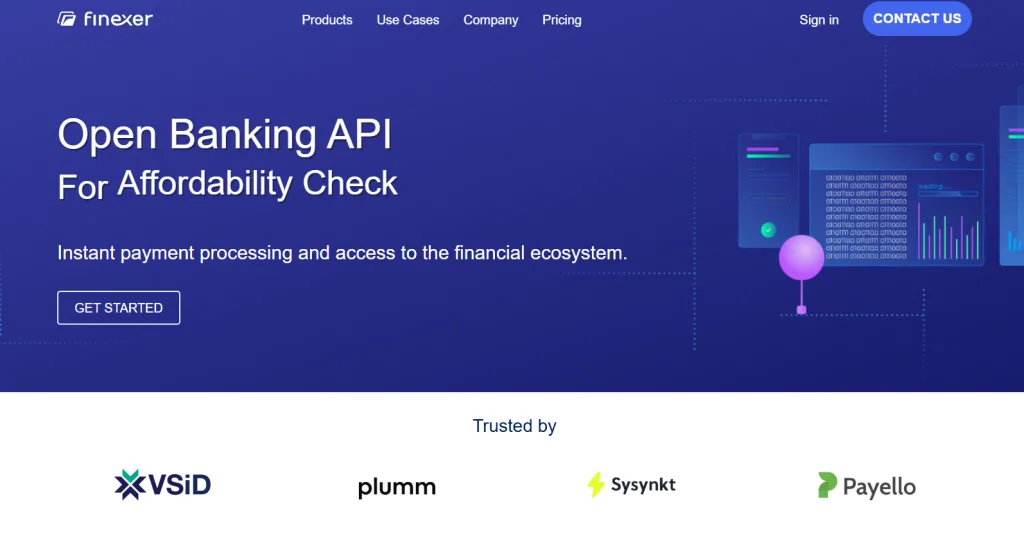Most UK businesses still rely on multiple banking portals to understand what’s happening with their money. When cash sits across different accounts, providers, and products, it becomes harder to track incoming payments, monitor spending patterns, or get a clean financial snapshot at any moment.
Account aggregation solves this by pulling balances and transactions from every connected bank into one view—your own dashboard, your ERP system, or a customer-facing product. Instead of switching tabs or exporting CSVs, teams get live financial data exactly where they need it.
Open Banking APIs make this possible in a secure and permission-based way, giving businesses instant access to:
- Real-time balances
- Categorised and historic transactions
- Multi-account visibility across 99% of UK banks
- Cleaner data for reporting, reconciliation, and forecasting
This blog breaks down how different industries use Open Banking–driven account aggregation and what it unlocks for their operations, customers, and product features.
What “Account Aggregation” Means in Open Banking
In Open Banking, account aggregation means pulling data from multiple bank accounts across different UK banks and displaying it in a single interface.
The business never handles passwords. Users approve access through their banking app and the data flows back instantly through regulated AIS APIs.
At a technical level, it involves three core API calls:
- Account Information — retrieves account details (account name, type, sort code, account number masked).
- Balance Endpoints — fetches real-time available and current balances.
- Transaction Endpoints — fetches historic and live transactions (often up to 7 years).
Together, these API calls give a full, real-time financial picture without manual reconciliations, spreadsheets, or separate bank logins.
How UK Teams Actually Use Account Aggregation Day to Day
Once Open Banking is wired in, account aggregation stops being a “feature” and becomes part of the daily workflow. Here’s what that looks like inside real teams.
1. Accounting & Advisory Firms: Cleaner Client Files, Less Chasing
Instead of emailing clients for bank statements, firms connect client accounts once (with consent) and pull:
- Live and historic transactions straight into their accounting or review tools
- End-of-month balances for management accounts
- Cash movement patterns for advisory work
Account aggregation turns “Can you send last quarter’s statements?” into “Let’s review your actual numbers from this morning.”
📚 Guide to Open banking for Accountants
2. Lenders: Faster Affordability Checks
Credit and risk teams plug account aggregation into their underwriting flow to:
- View all of a borrower’s accounts in one place
- Spot recurring income, irregular inflows, and risky outgoings
- Build a clearer affordability picture than static credit reports alone
Instead of waiting on PDFs or uploads, the data is refreshed through Open Banking in minutes, not days.
3. Wealth & Investment Platforms: Full-Balance View for Clients
Wealth platforms use account aggregation to bring:
- Cash accounts, savings, and investment accounts into a single dashboard
- Real-time cash positions alongside longer-term portfolios
- A more accurate “total wealth” picture for each client
This helps advisors and clients have better conversations, because they’re looking at the complete picture, not just the accounts held on that platform.
4. SaaS & Fintech Products: One Data Layer, Many Features
Product teams often use account aggregation as a foundation for multiple features:
- In-app cash overviews
- Spending and income breakdowns
- Alerts when balances drop below a threshold
- Inputs into forecasting, budgeting, and risk models
The same account aggregation layer feeds different parts of the product, from dashboards to analytics to alerts.
Implementation Table
| Component | What It Means | Use |
|---|---|---|
| AIS Access | Permission to fetch account details, balances, and transactions through regulated Open Banking APIs. | Foundation of account aggregation; you never handle customer credentials. |
| Consent Flow | User selects their bank, approves access, and your system receives a secure access token. | Ensures compliant, legally valid data access. |
| Data Retrieval API Calls |
Endpoints like /accounts, /balances, and /transactions fetch real-time data.
|
Powers the full account aggregation view across banks. |
| Normalisation Layer | Cleans merchant names, categorises transactions, and removes duplicates. | Provides consistent, analysis-ready data. |
| Storage & Reporting | Store or visualise aggregated banking data inside your product. | Enables forecasting, reconciliation, and actionable insights. |
How Finexer Enables Account Aggregation for UK Businesses

Finexer gives UK businesses a clean, developer-friendly way to consolidate balances and transactions from every major bank into one system. Instead of building complex connections yourself, Finexer handles the data access, consent flow, and normalisation layer so your product teams can focus on the experience.
What Finexer Unlocks for Account Aggregation
- 99% UK Bank Coverage
Connects to nearly every UK bank and building society. - No Limits on Transaction Data Fetch
Pull full historic data (up to 7 years) without caps or hidden restrictions. - Real-Time Balances & Multi-Account Views
Fetch current and available balances across all connected accounts. - Clean & Developer-Friendly API Structure
Endpoints are consistent, straightforward, and easy to integrate. - Usage-Based Pricing
Pay only for the calls you make — suitable for early-stage and enterprise teams. - Fast Deployment (2–3x Faster Than Market)
Teams ship live account aggregation features quicker without deep API complexity + 3-5 weeks of hands-on assistance. - White-Label Capabilities
Build your own branded account aggregation experience using Finexer’s API layer.
What is account aggregation in Open Banking?
It lets businesses pull balances and transactions from multiple bank accounts into one view using regulated APIs.
Does account aggregation work with all UK banks?
Yes. Modern providers like Finexer cover about 99% of UK banks
Is account aggregation safe?
Yes. Users authenticate through their bank, and no credentials are shared with the business.
Add real-time account aggregation to your product with Finexer and launch features faster with zero setup costs!
